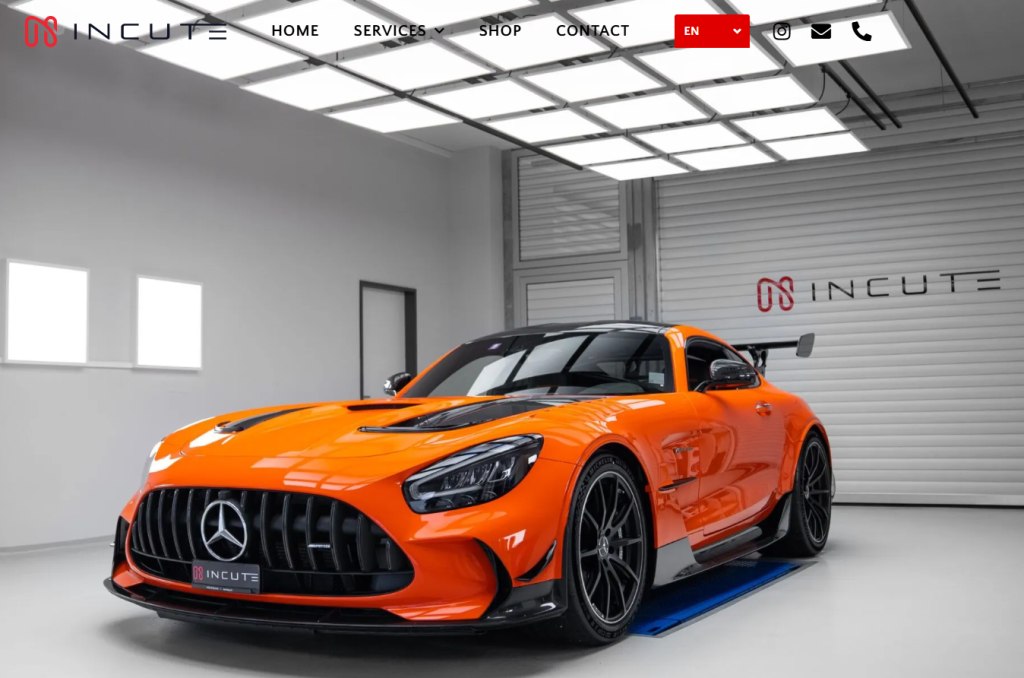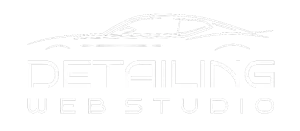
I remember the days when your garage’s reputation was built purely on word-of-mouth and the shine of your clients’ cars. Fast forward to 2025, and your first impression often comes from your website. But here’s the question I get asked constantly by fellow detailers: Should I go for a custom website, or are templates good enough?
This decision can make or break your business. Your website isn’t just a digital brochure—it’s a lead generator, a credibility booster, and often the first interaction a client has with your detailing services. After 30+ years in the business, I’ve seen both approaches succeed and fail. Let me walk you through the pros, cons, and insider tips so you can make the best choice for your shop.
1. Understanding the Options
Before diving into comparisons, let’s clarify what we mean:
- Custom Website Design: Built from scratch, tailored to your business, branding, and user experience.
- Template-Based Website: Pre-designed layout that can be slightly modified, often quicker and cheaper.
Think of it like car detailing itself—some clients want a quick wash (template), others want a full ceramic coating tailored to their car (custom).
2. The Advantages of Custom Auto Detailing Website Design
Tailored to Your Brand
Your shop isn’t like anyone else’s. Custom design allows:
- Unique color schemes reflecting your branding.
- Personalized typography and style.
- Integration of your logo, slogan, and signature offerings.
Story: I helped a classic car detailing shop build a custom site highlighting their vintage restoration services. Within months, they attracted collectors nationwide—something a template could never showcase effectively.
Enhanced User Experience
A custom site is designed with your clients in mind:
- Optimized booking flows.
- Service-specific pages.
- Mobile-first navigation and interactive galleries.
Pro Tip: Always test with real users before launch. I once launched a template-based site that confused clients on booking—they lost 20% of inquiries in a month.
Flexibility & Scalability
Custom sites grow with your business:
- Add new services, galleries, or blog posts seamlessly.
- Integrate advanced features like subscription plans or fleet management.
- Adapt design trends without major overhauls.
SEO Optimization Advantage
Custom design allows:
- Faster page load speeds.
- Proper on-page SEO structures (meta tags, headings, schema).
- Clean code that search engines love.
3. The Drawbacks of Custom Design
- Higher initial cost. Think of it like a full paint correction—it’s worth it but pricey.
- Longer development time (weeks or months).
- Requires a reliable developer or agency.
Story: I’ve seen detailers hesitate at a $5,000 custom site, but in three months, it paid for itself through new bookings.
4. The Advantages of Template-Based Auto Detailing Websites
Quick & Affordable
Templates are ready-made, meaning:
- Launch in days, not months.
- Lower upfront cost.
- Easy DIY edits for minor changes.
Beginner-Friendly
Most templates come with:
- Pre-designed pages for services, pricing, and contact forms.
- Drag-and-drop editors.
- Built-in responsive layouts.
Insider Hack: For startups on a tight budget, a high-quality template can get you online fast while you save for a custom upgrade later.
Consistent Layouts
Templates are tested for:
- Mobile responsiveness.
- Cross-browser compatibility.
- Basic user navigation flow.
5. The Drawbacks of Templates
- Lack of uniqueness—your site may look like competitors’ sites.
- Limited customization for advanced features.
- SEO limitations due to pre-written code.
- Difficult to integrate complex booking or gallery systems.
Story: One shop tried a $49 template. After launch, clients complained about the booking process, and SEO efforts were limited—forcing them to rebuild months later.
6. Cost Comparison: Custom vs Templates
| Feature | Custom Design | Template Design |
|---|---|---|
| Initial Cost | $3,000–$10,000+ | $50–$500 |
| Development Time | 4–12 weeks | 1–2 weeks |
| Unique Branding | 100% | Limited |
| Scalability | High | Medium |
| SEO Optimization | Full control | Limited |
| User Experience | Fully tailored | Template-based |
Pro Tip: Think of it like detailing packages—sometimes investing more upfront saves headaches and boosts profits later.
7. When to Choose a Custom Design
- You own a high-end or specialized shop.
- You want a unique brand identity online.
- You need complex booking or service integration.
- You plan to scale services rapidly.
8. When Templates Make Sense
- You’re starting small or on a limited budget.
- You need a website online fast.
- Your services are standard and don’t require unique customization.
- You have some DIY skills or a team to manage minor tweaks.
9. Insider Tips: Maximizing Any Choice
- Hybrid Approach: Start with a template and gradually move to a custom design.
- High-Quality Images: Whether template or custom, authentic before-and-after photos sell your work.
- Mobile Optimization: Never ignore mobile users; most bookings come from phones.
- Clear CTAs: Make it easy to book, call, or inquire.
- SEO Basics: Even templates benefit from proper meta titles, headings, and keywords like “auto detailing services near me.”
10. The Future: Trends in Auto Detailing Website Design
- AI Chatbots: Instant customer support.
- AR Car Previews: Let clients see potential results digitally.
- Interactive Booking Calendars: Advanced integration for fleet or repeat customers.
- Eco-Friendly Messaging: Highlight sustainability for EVs and hybrid owners.
Story: I recently advised a shop adding AR previews. Clients were booking ceramic coatings after virtually seeing results—something templates rarely support.
Key Takeaways
- Custom websites: Best for branding, scalability, advanced features, and SEO.
- Templates: Ideal for quick, affordable online presence for new or budget-conscious businesses.
- Your choice should reflect business goals, budget, and growth plans.
- Always prioritize user experience, mobile responsiveness, and authentic visuals.
FAQs: Custom vs Template Auto Detailing Websites
Q1: Can I start with a template and later switch to custom?
Yes, it’s a practical way to get online quickly and upgrade when ready.
Q2: Will a template limit my SEO potential?
Some templates have limitations, but with proper editing and SEO plugins, you can still rank.
Q3: How much does a custom site cost on average?
Typically $3,000–$10,000+ depending on features and complexity.
Q4: Are custom sites harder to maintain?
Not necessarily. With a reliable developer or CMS, updates are straightforward.
Q5: Which option drives more bookings?
Custom sites often convert better due to tailored UX, but high-quality templates can also perform well if optimized properly.
Conclusion: Choosing the Right Path for Your Detailing Business
After 30 years in this industry, one lesson is clear: your website is like a car’s paint job—first impressions matter. A custom design gives you a polished, unique, scalable presence, while a template gets you online fast and affordably.
Ultimately, the best choice depends on your budget, business goals, and growth vision. If you’re serious about scaling, building a brand, and attracting high-end clients, investing in a custom auto detailing website is the route I’d recommend. For startups or budget-conscious owners, a high-quality template is still a solid starting point.
🚗 Your digital garage is waiting—choose wisely, and your website will drive your detailing business forward for years to come.

